The New Louis Vuitton Tambour Twenty Chronograph Celebrates 20 Years of LV’s Icon
The unmistakable silhouette of the Tambour hasn't missed a beat since its debut two decades ago.
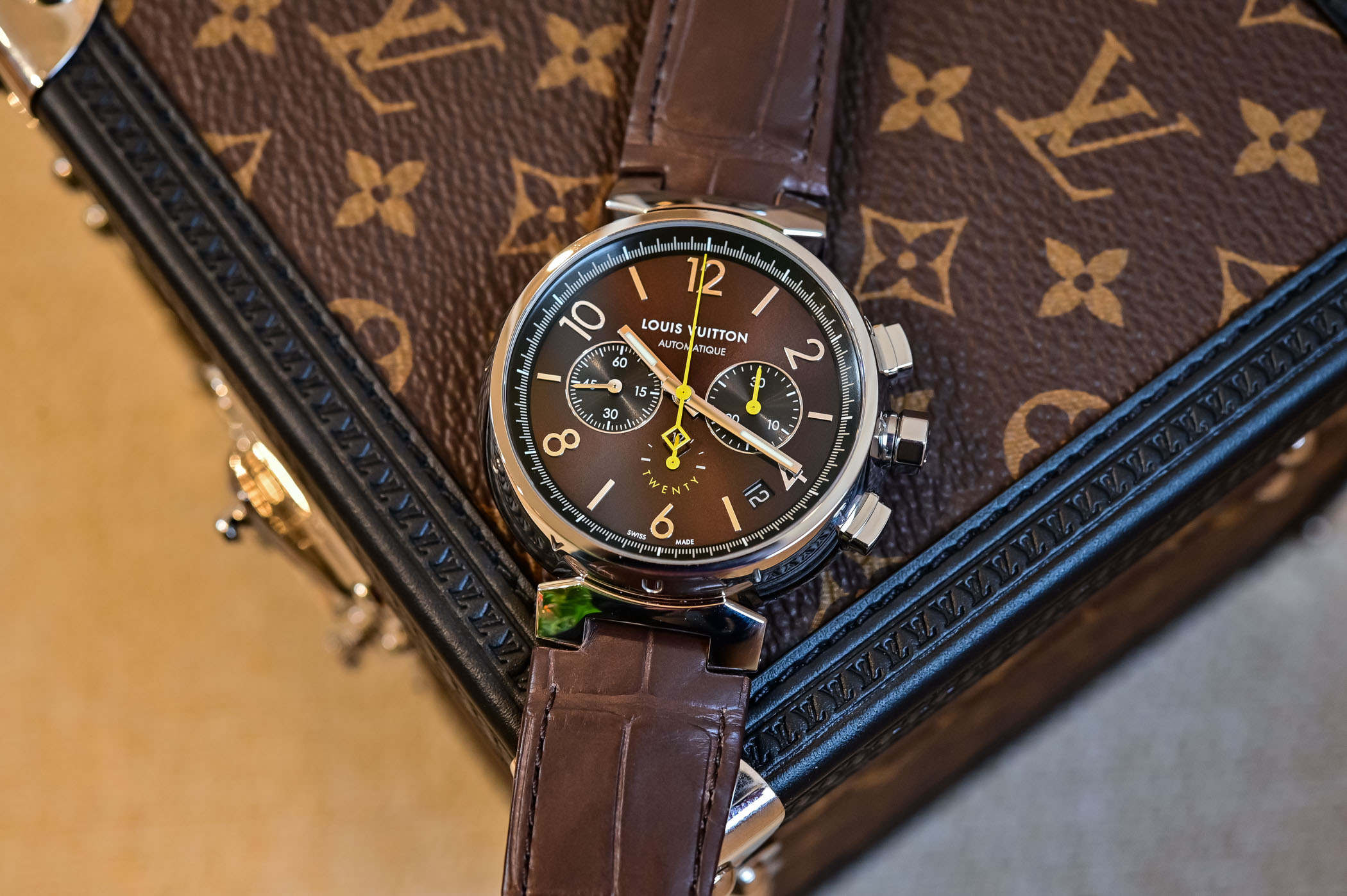
According to the Vogue Business Index (summer 2022) and Forbes, French fashion house Louis Vuitton is the world’s most valuable luxury brand. As the undisputed king of luxury, Louis Vuitton is associated in every corner of the globe with high-quality leather goods and accessories emblazoned with the iconic LV monogram. Somewhat surprisingly, given its presence on the market since 1854, Louis Vuitton only started making ‘serious’ watches twenty years ago. In a departure from some luxury emporiums that prize design over substance, Louis Vuitton took the bull by the horns and decided that its watches had to be as good on the inside as out. Louis Vuitton’s first watch, the Tambour, and its incursion into big-league watchmaking consolidated with the acquisition of La Fabrique du Temps have resulted in a unique, potent design that is impossible to confuse with anything else on the market. The Tambour, which means drum in French, marched out with its distinctive drum-shaped case and a GMT complication in 2002. Coming up for its 20th anniversary this year, the Tambour returns with iconic LV livery and a high-frequency chronograph movement based on Zenith’s El Primero calibre: meet the new 200-piece Tambour Twenty Limited Edition.
An Empire Built on a Trunk
For a brand that is at the apex of the luxury ladder, the origins of Louis Vuitton might come as a surprise. You could say that Louis Vuitton (1821-1892), who ran away from home at 13, built his luxury empire on the back of a trunk. As an apprentice to one of the best box-makers in the city, Louis Vuitton hobnobbed with the Parisian elite and eventually became Empress Eugénie de Montijo’s official box-maker and packer. In 1854, the talented box and eventually trunk-maker opened Louis Vuitton Malletier on Rue des Capucines.
Buoyed by the advent of shipping and train travel, his vertical steamer trunk was much in demand by the first globetrotters and adventurous scientists. To overcom the problem of stacking domed-shaped trunks in the steamer cabin of ships, Louis Vuitton came up with flat-topped trunks that could easily be stacked. Another problem was identifying trunks, and Louis Vuitton offered his clients bespoke tags in eye-catching colours, often with monograms, crests or geometric motifs in bright colours. Louis Vuitton also designed and patented a canvas of alternating brown and beige squares – the Damier (chequerboard) canvas –, which earned him a gold medal at the 1889 Exposition Universelle in Paris. Despite the patent, copycats proliferated, and his only son and heir, Georges Vuitton, came up with a new design composed of four-petal flowers (quatrefoils) and the interlocking initials of Louis Vuitton. Known as the Monogram canvas, this 1896 design is still the cornerstone of the brand’s identity.
The genesis of the Tambour
Given the brand’s historical ties to travel (see above), it makes sense that the first Tambour watch released in 2002 was a GMT. Fitted with a lustrous brown dial (quite bold at the time) and a mustard yellow GMT hand and matching 24-hour scale, the colour scheme of the 39.5mm Tambour GMT (ref. Q11310) was a nod to the iconic Monogram canvas developed by Louis Vuitton’s son in 1896. As the blueprint for the Tambour family, it’s worth looking at the design features that have made it such a unique, somewhat quirky design that looks as fresh today as it did two decades ago.

Some sources attribute the inspiration for the deep, round, drum-shaped steel case of the Tambour to the silhouette of Japanese taiko drums. As Jean Arnault pointed out to MONOCHROME, the design of the Tambour was entrusted to a Parisian design studio (BBDC – Berra Blanquer Design). The result was a singular, unprecedented case shape that did, effectively, look like a drum. Its unusual flared profile, which was wider at the base than at the top, included a wide caseband, the perfect canvas to engrave the 12 letters in the name ‘Louis Vuitton’, aligned with the hour markers on the dial. Crafted from a single block of metal, the tall sloping flanks of the deep case also proved an ideal container for all sorts of complications (some Tambour models, like the Carpe Diem, have a height of 15mm). Practically every surface of the Tambour case was decorated with some form of branding, including the LV monogram on the crown, motifs from the Monogram canvas on the caseback, the brand name on the buckle and obviously, the dial.

A year after its debut, the Tambour returned with a high-frequency COSC chronometer-certified chronograph complication, a model that has a direct bearing on the latest Tambour Twenty anniversary piece we are covering today. Known as the Tambour LV 277 chronograph, the model took advantage of the synergies in the LVMH group and powered its chronograph with Zenith’s famous El Primero high-frequency calibre.
Perhaps one of the most delightful Tambour watches and the one that would determine the new direction for the collection was the 2009 Spin Time. With 12 miniature rotating cubes revealing the hours, the Spin Time reinvented the concept of jumping hours in a fresh, new language. Developed and patented by La Fabrique du Temps, a specialist complication workshop based in Geneva set up by master watchmakers Michel Navas and Enrico Barbasini, the 44mm Spin Time put a playful spin on time, but it also signalled a more creative approach to complications in the hands of Navas and Barabasini.
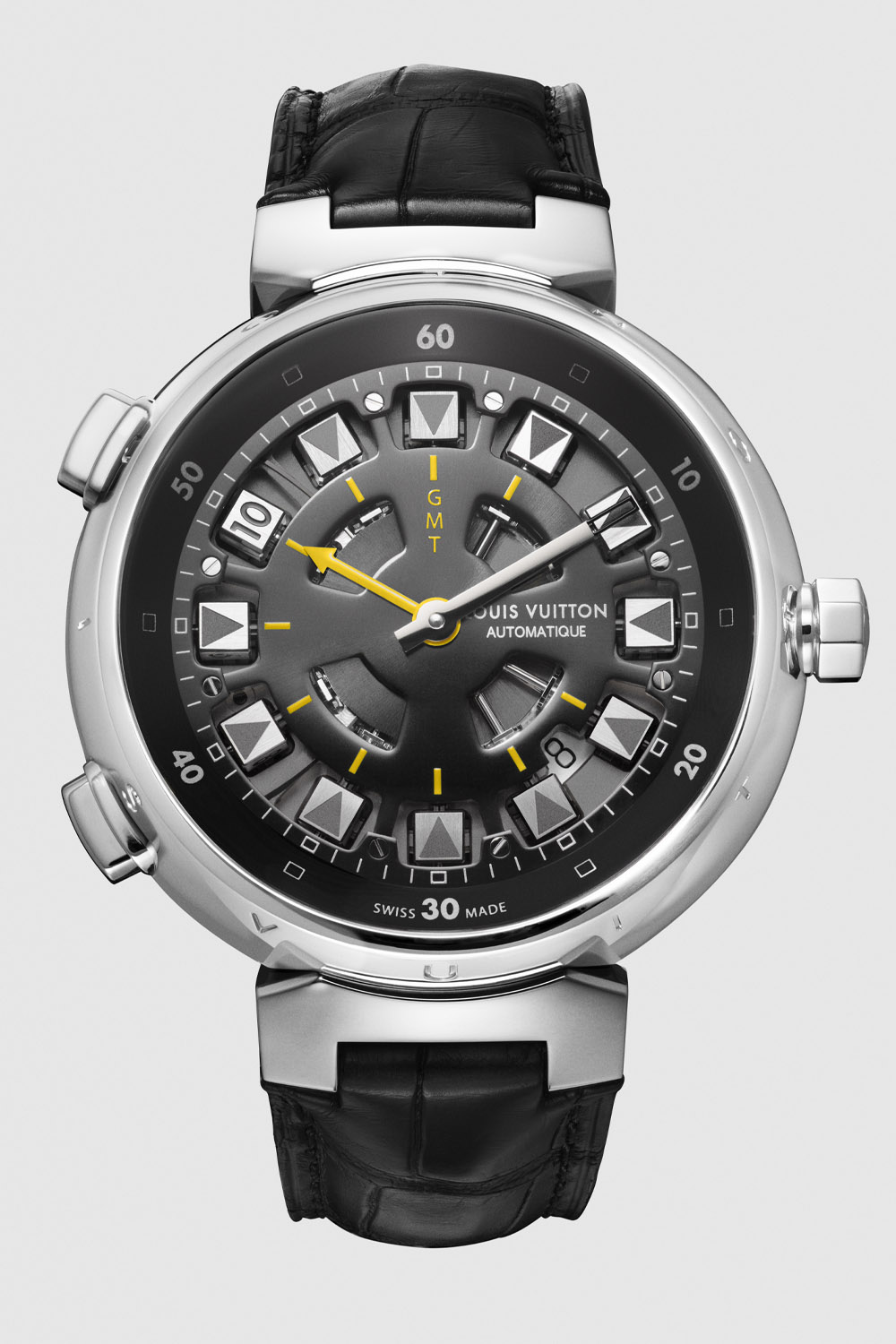
Just two years later, in 2011, Louis Vuitton upped its watchmaking antes by acquiring La Fabrique du Temps. To mark its commitment to creative high-end watchmaking, the brand unveiled the complex Tambour Minute Repeater, a fascinating GMT complication that chimed the wearer’s reference (home) time instead of local time on demand.
Determined to acquire even more independence, in 2012, Louis Vuitton bought Léman Cadran, a renowned dial maker, and in 2014, inaugurated the La Fabrique du Temps Louis Vuitton workshop in Meyrin, Geneva. Other standout Tambour models over the years include the Tambour Twin Chrono, a monopusher split-seconds chronograph, a skeletonised Flying Tourbillon with a cage shaped like the Monogram flower, the 2020 Tambour Curve Flying Tourbillon with Poinçon de Genève certification, and the sportier GPHG award-winning Tambour Street Diver of 2021.
The Louis Vuitton Tambour Twenty
Having established Louis Vuitton’s serious commitment to high-end watchmaking, it might come as a surprise that the Tambour Twenty Limited Edition is not powered by an in-house movement but by a high-frequency chronograph calibre based on the Zenith El Primero… Just like the 2003 Tambour. A retrospective model, if you like, the new Tambour Twenty upgrades some of the design features found on the dial of the original Tambour chronograph but flaunts the hallmark drum-shaped case. The gleaming polished stainless steel case measures 41.5mm across with a height of 13.2mm and features the 12 letters of the Louis Vuitton name engraved in the caseband, matching the position of the hour markers on the dial. Like the first Tambour chronograph, two rounded rectangular chronograph pushers flank the octagonal crown, and the case is water-resistant to 100 metres.
In a departure from the 2003 chronograph, the three sub-dials are not arranged inside a circle, and the sloping flange is brown to match the dial. The sun-brushed dial is a classic Louis Vuitton brown with contrasting yellow chronograph hands, a nod to the yellow thread historically used in the brand’s finely crafted leather goods. Large applied silver-coloured Arabic hour numerals as 12, 2, 4, 6 and 8 o’clock and baton markers, shortened at 3 and 9 o’clock to accommodate the sub-dials, stand out well against the warm brown background.
The two sub-dials for the running seconds at 9 and 30-minute elapsed times at 3 o’clock have black snailed interiors and clear white markings to match the peripheral seconds track calibrated to 1/10th of a second. The 12-hour chronograph counter is highlighted in yellow just above 6 o’clock, and its lower half is formed by the curving inscription ‘Twenty’. The baton-style hour and minute hands have blunt tips and a streak of Super-LumiNova down their spines, while the long central chronograph seconds hand with its lozenge-shaped counterweight and the chronograph hands are bright yellow. Angled between 4 and 5 o’clock, the date window has a black background and white numerals.
LV 277 based on Zenith El Primero
Turning the watch over, you can see the doughnut-shaped metal part of the screwed caseback with the ‘Limited Edition 200 Pieces’ inscription and the sapphire crystal over the movement. Still powered by calibre LV 227, based on Zenith’s famous El Primero high-frequency movement (the world’s first automatic chronograph movement unveiled in 1969), the rotor of this anniversary Tambour Twenty is crafted in 22k rose gold. Beating at 5Hz/36,000vph, this exceptional column-wheel chronograph calibre delivers a beefy power reserve of 50 hours and provides highly accurate readings all the way down to 1/10th of a second.
Availability & Price
Delivered with a dark brown alligator strap (equipped with a quick-exchange system) inside a miniature Louis Vuitton trunk with a Monogram canvas, the 200 pieces of the Tambour Twenty will retail for USD 17,800.
For more information, please visit louisvuitton.com.




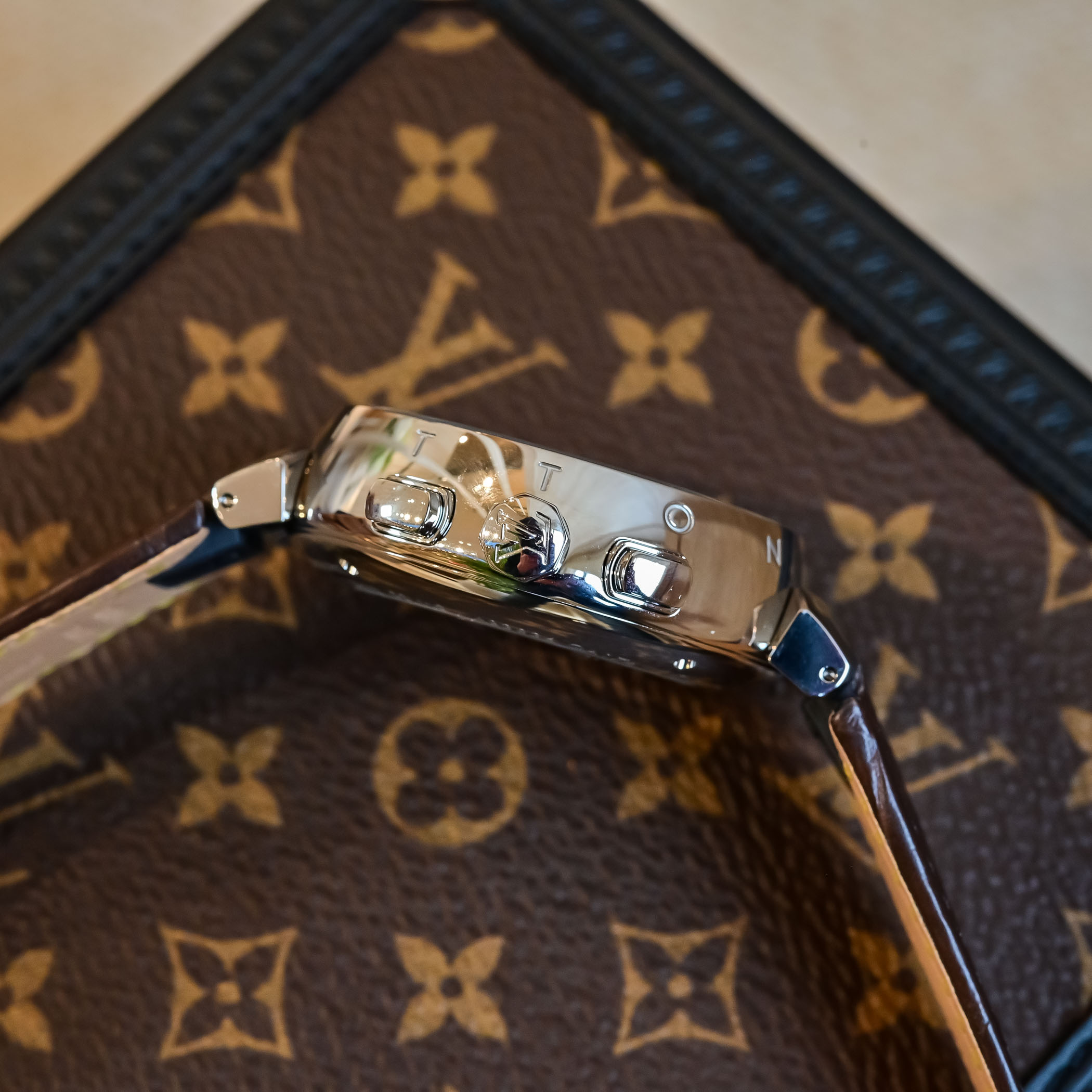
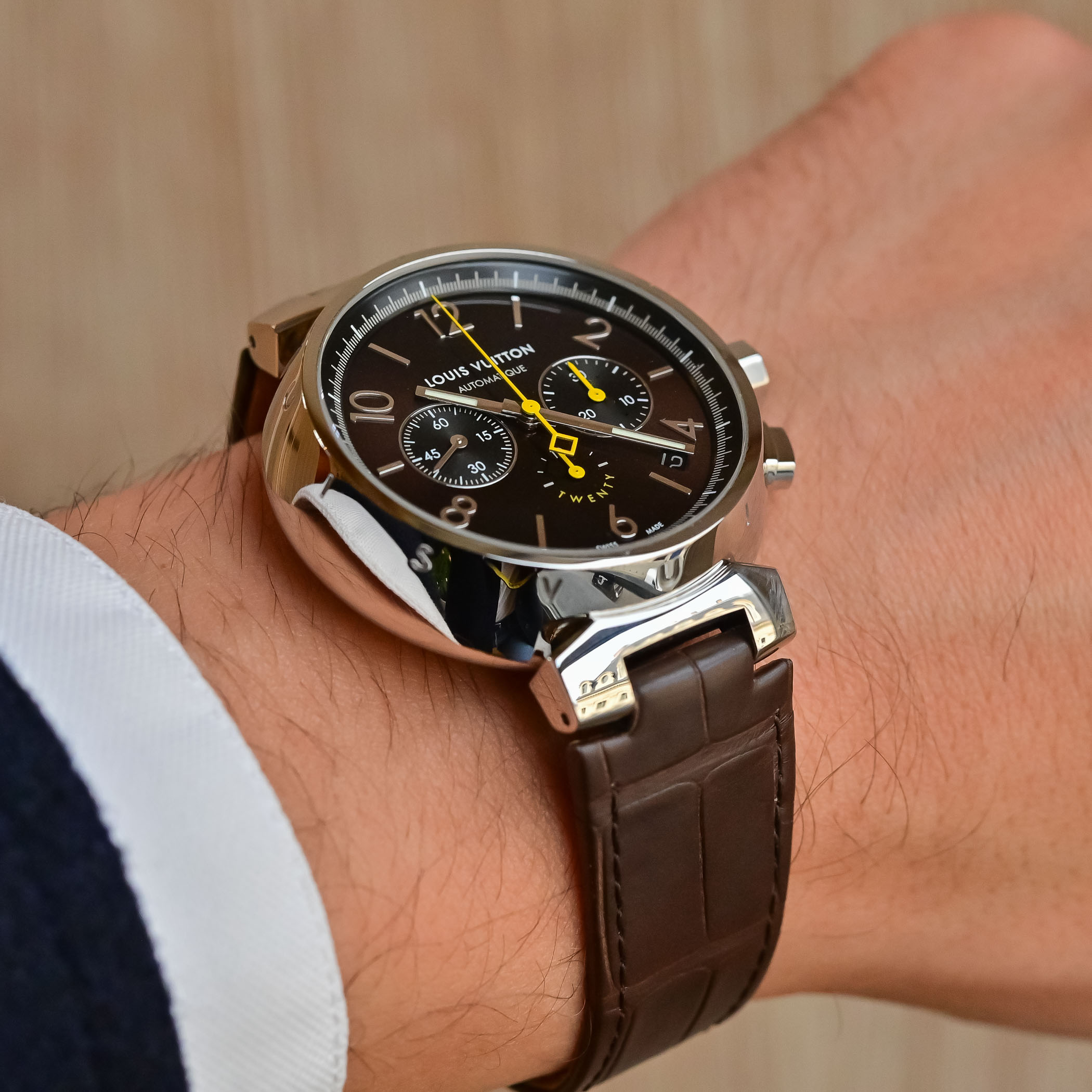

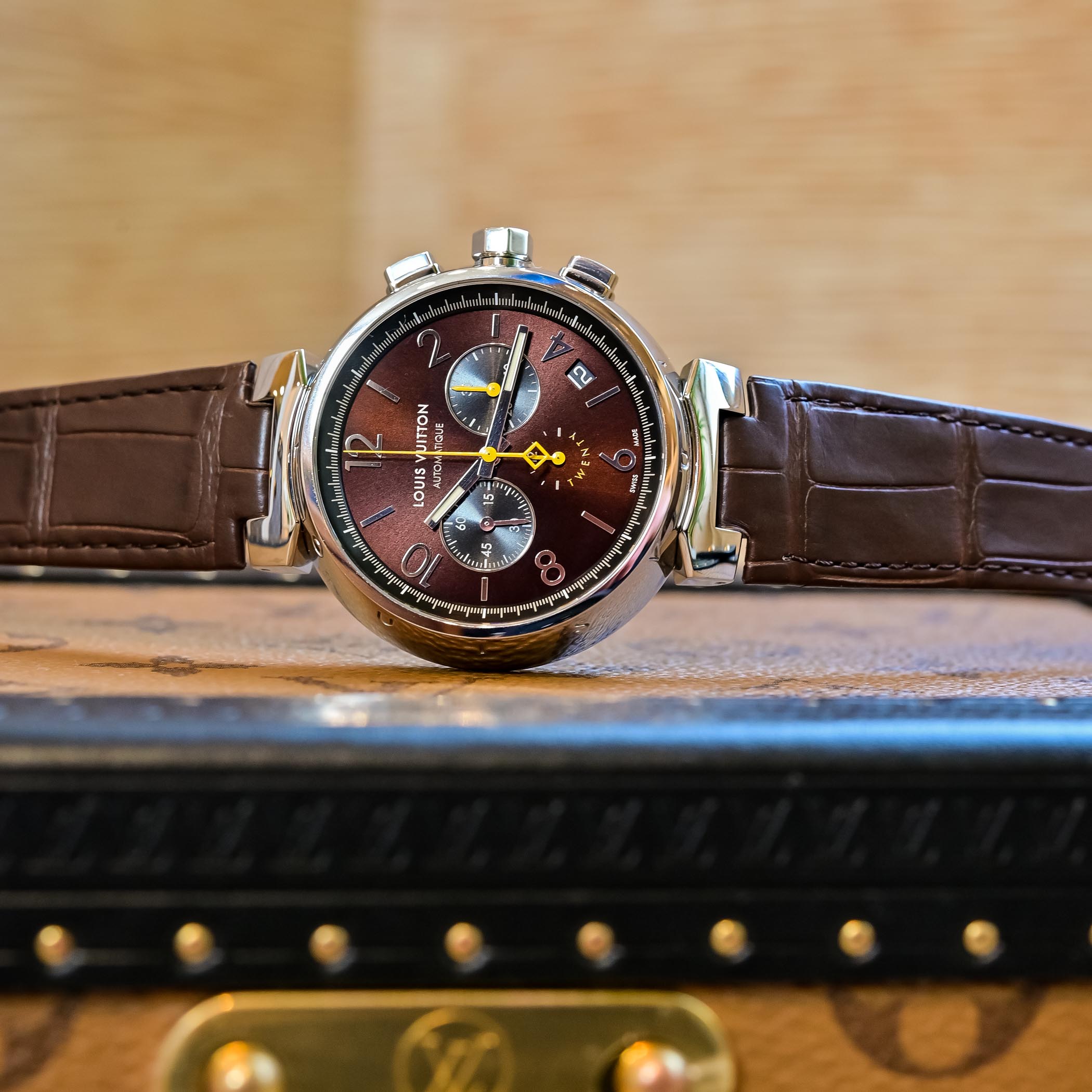
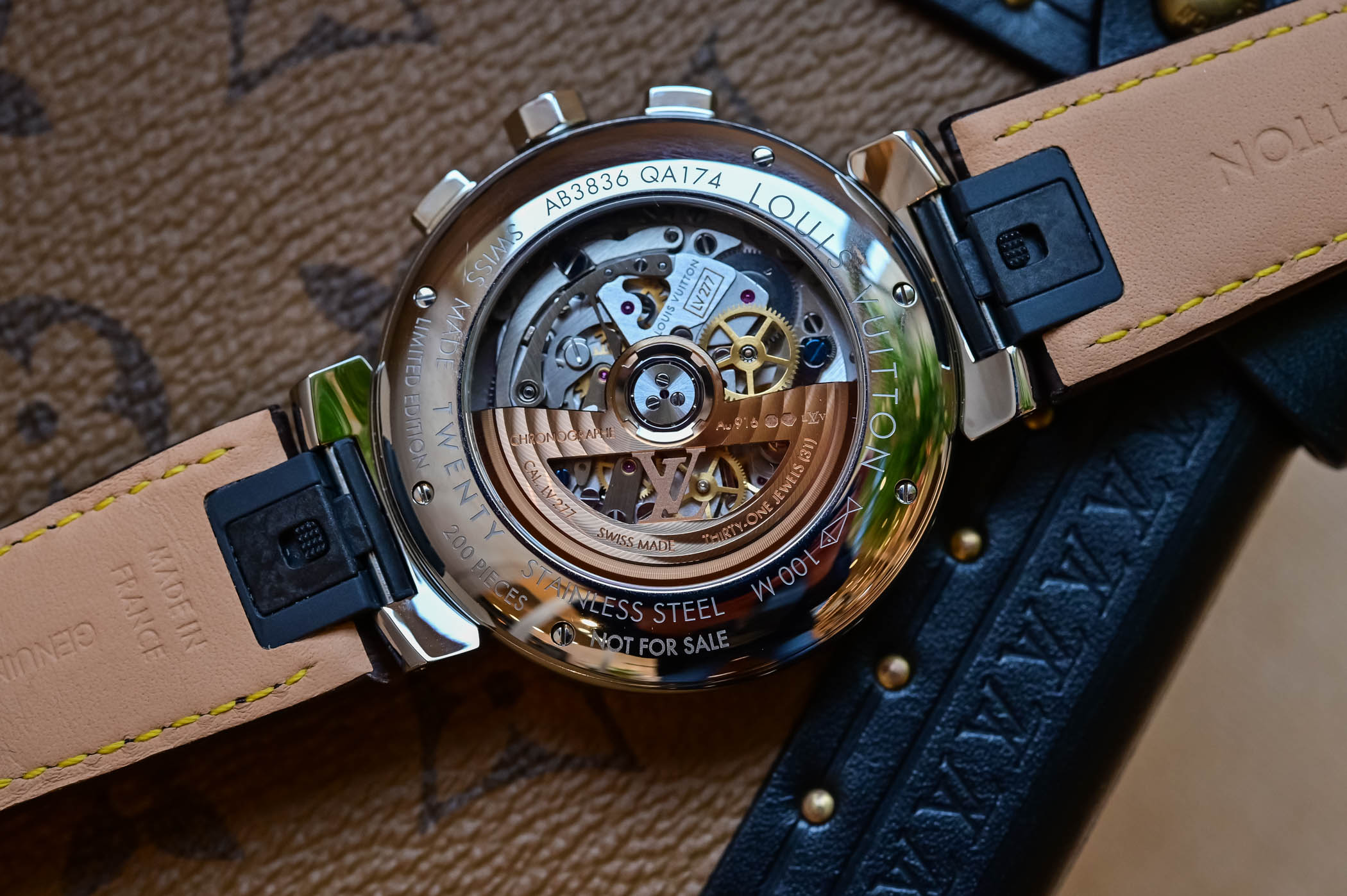
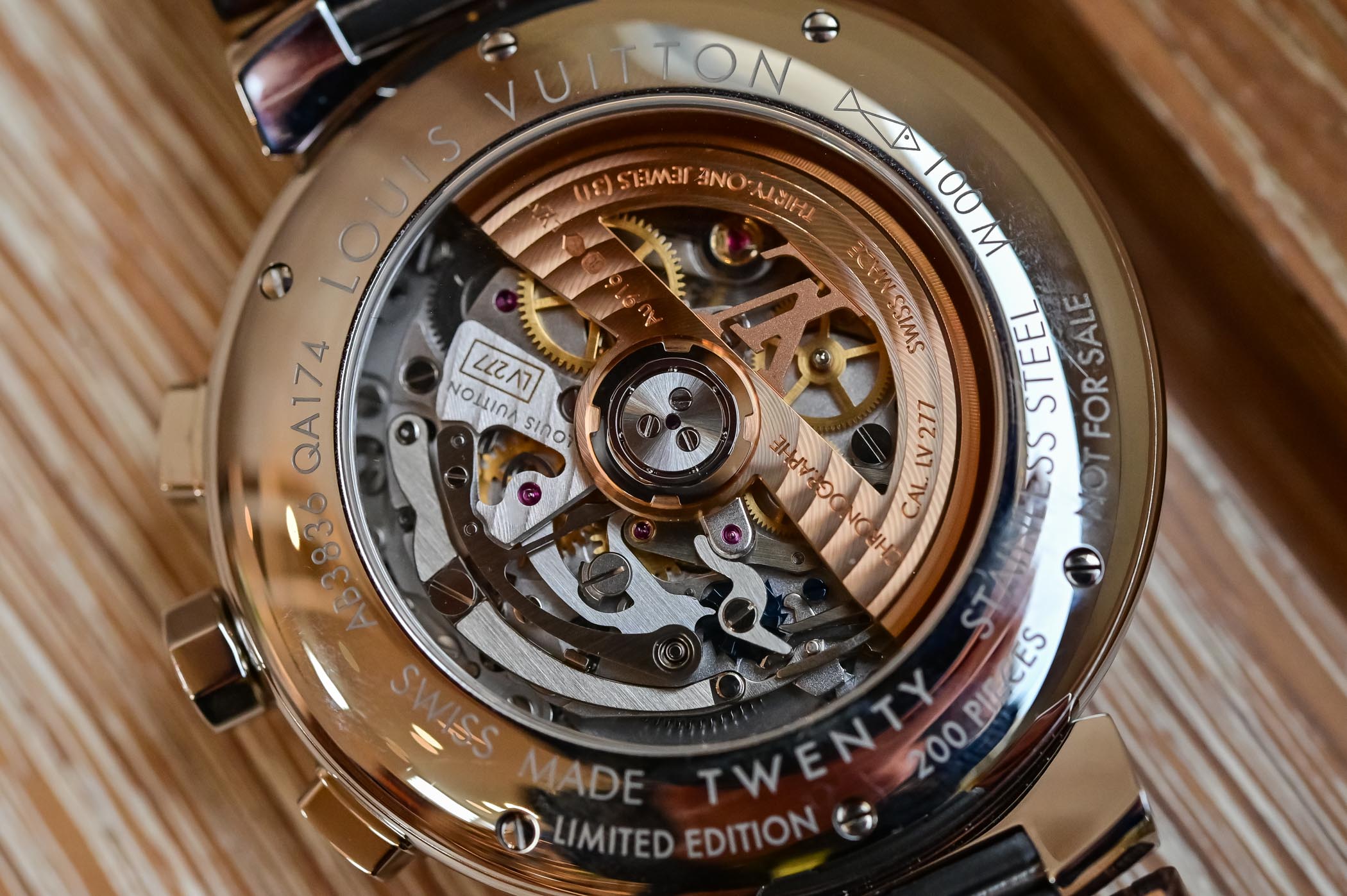
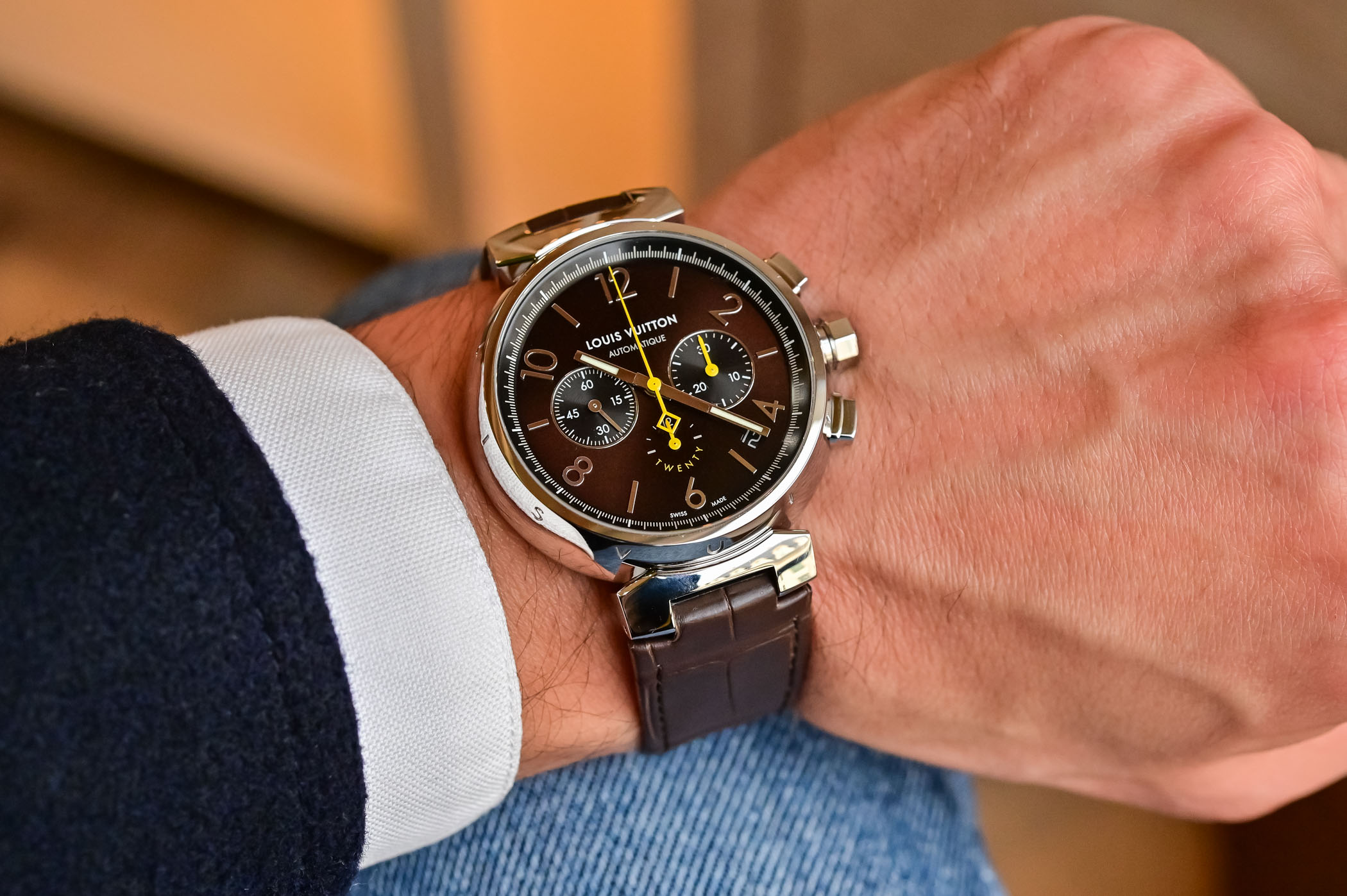



1 response
I like this